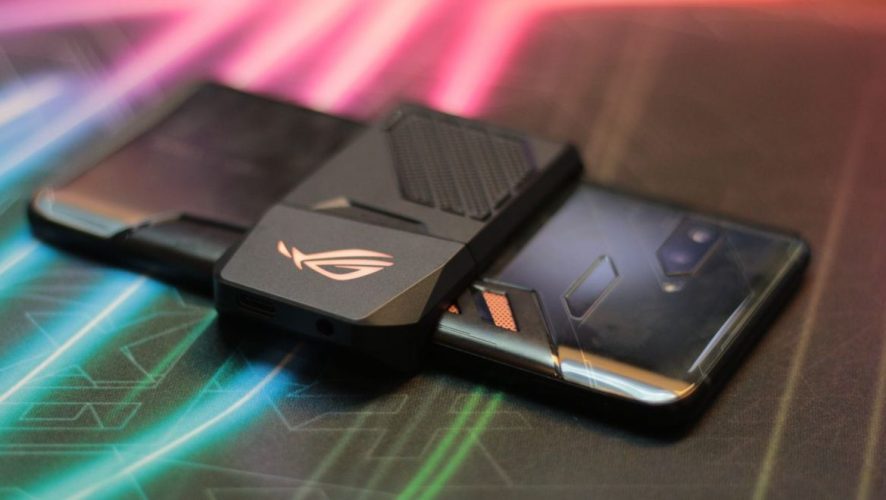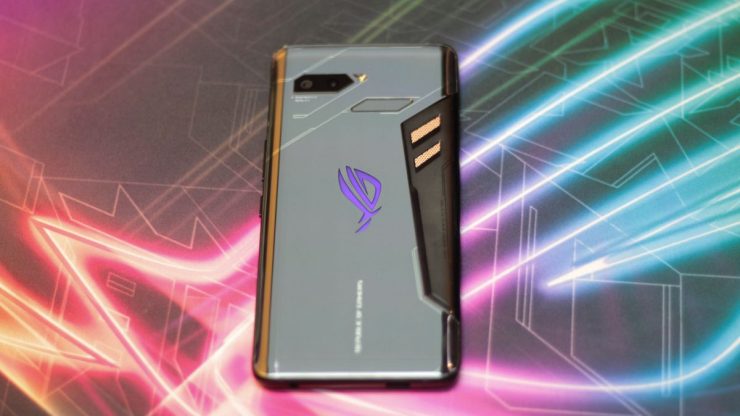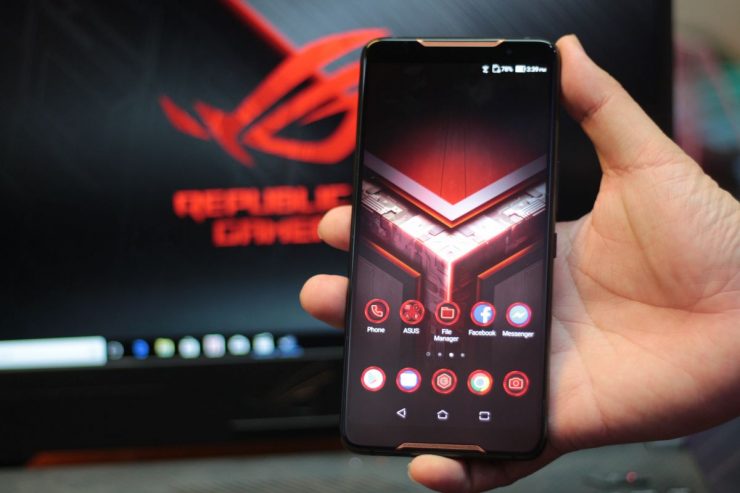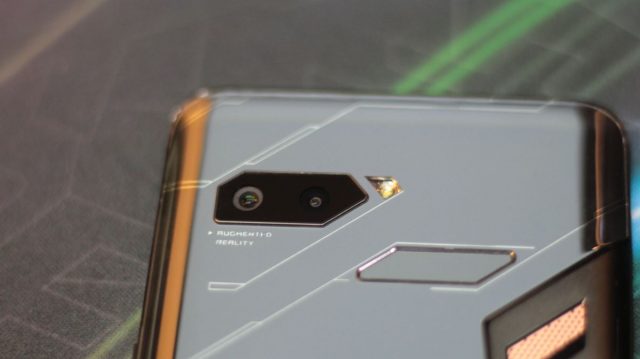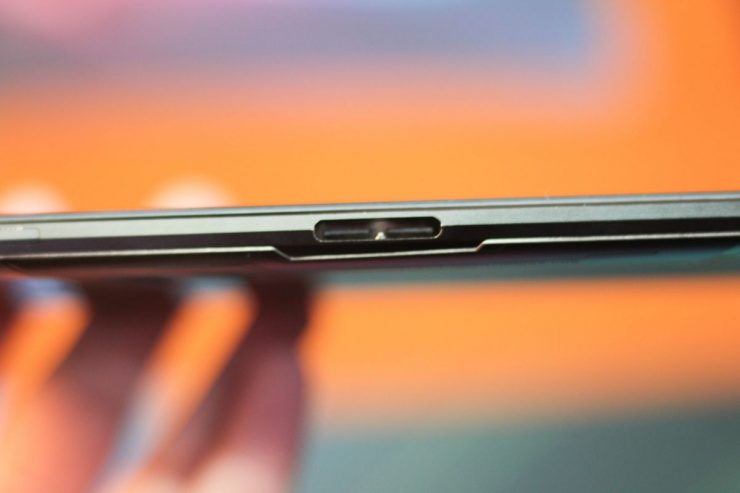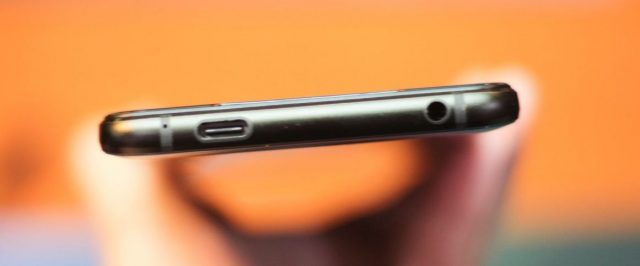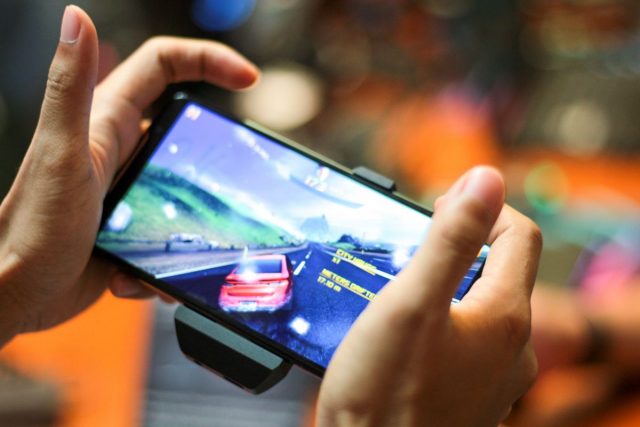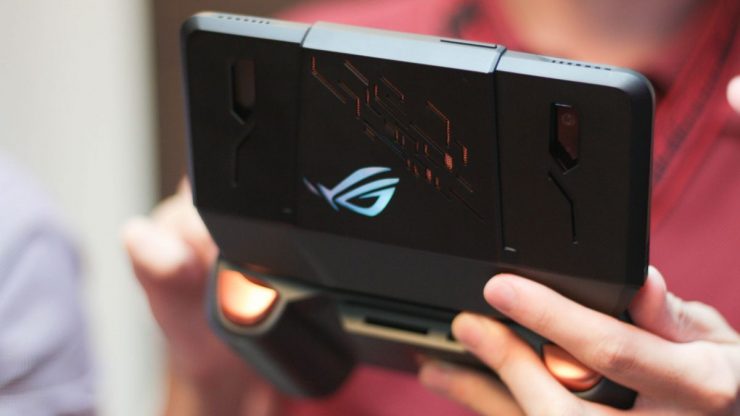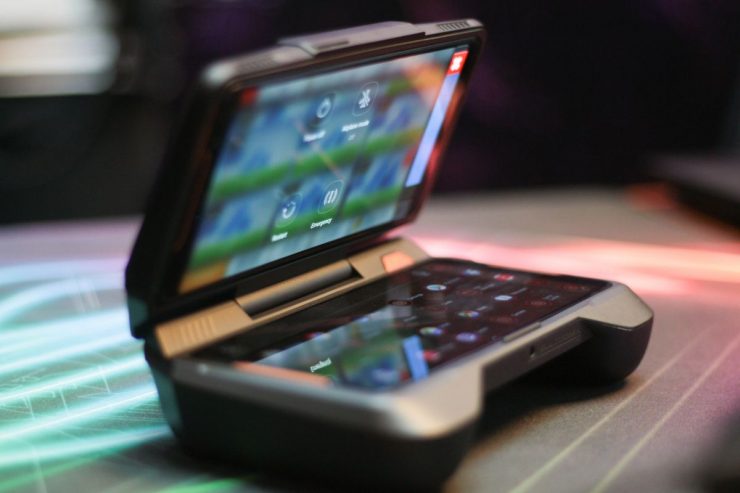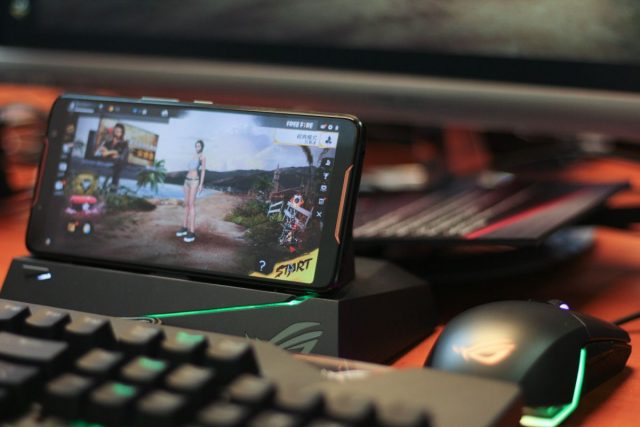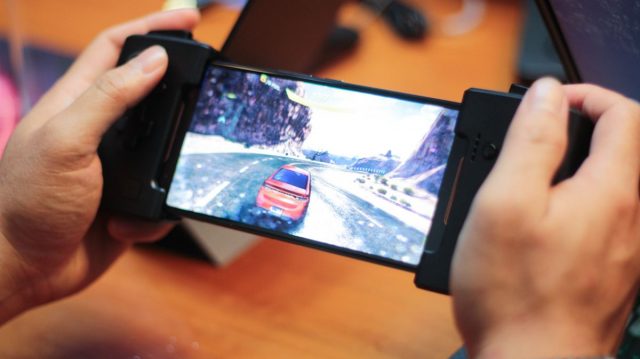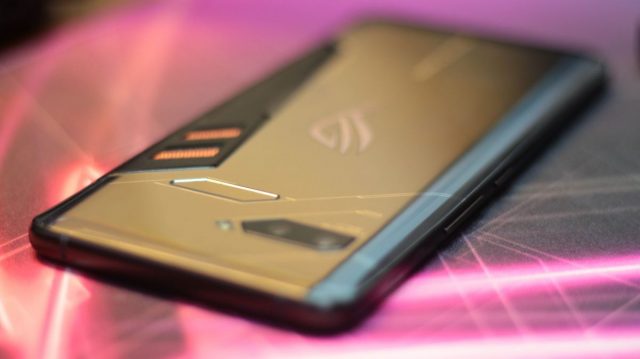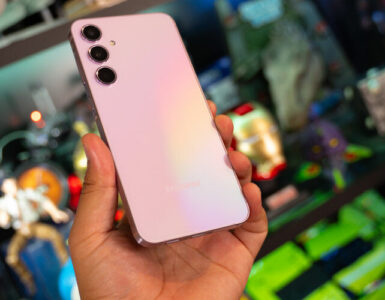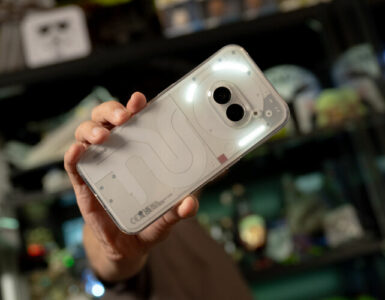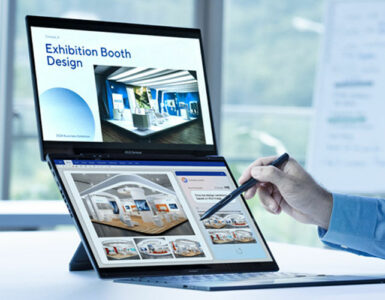Even before the Razer Phone, there was already a strong interest in developing a device specially tailored for the mobile gaming market – and why wouldn’t there be, when it has been rapidly expanding over the past few years? While on-the-go gaming is hardly a new concept, especially with the evolution of times from the Gameboy Advance days to the current Nintendo Switch fad, it’s even more convenient with mobile devices – necessary gadgets that are being used on a far-too-frequent basis in everyday life.
Xiaomi has followed in Razer’s venture with the Black Shark gaming phone, and the next to fill their shoes is ASUS’ Republic of Gamers Phone, or the ROG Phone for short. Right off the bat, the design very evidently borrows elements from the team’s existing peripherals, with the rear being adorned with futuristic, sci-fi-esque stripes, and the front sporting dashes of red accents on a predominantly black body.
Along the remaining space on the back sits an unconventionally-shaped fingerprint scanner – a parallelogram cut instead of the usual circle –, as well as the ROG logo, which is fitted with RGB lighting technology. Nearer to the left is a dual-lens camera that has the same specs as that of the ZenFone 5, but without the AI feature: a 12MP image sensor with f/1.8 aperture, and another 120-degree wide-angle lens. It’s more than respectable, given that camera technology is probably on the lower bit of the priority ladder, which of course, goes to satisfying the gaming needs of individuals.
Due to the nature of the phone, the arrangement of ports differs slightly from the usual models on the market. There’s the customary volume rocker, power button, and SD card holder on the right frame of the device, leaving room on the left for a special two-pronged outlet. A feature that’s exclusive to the ROG Phone, it allows for landscape charging – especially nifty for mobile gaming, where the phone is held in a horizontal orientation – by means of the AeroActive Cooler, a detachable external RGB-lit cooler that comes as a default with the device. Coolio.
That’s not to say that the option for traditional charging is not available. As per most models, a USB-C port can be found at the base, alongside the much-debated 3.5mm ear jack.
An important aspect of gaming, even on mobile, is the need to spot the opponent in-game before the reverse happens. This is where the ROG Phone’s AMOLED 108%-wide colour gamut display comes into the picture, boasting an overall brighter screen with less blacks. In particular, the gaudier colours tend to take on a more vivid tone, which does make it easier to spot corners in the shooter title Freefire, but can also be a slight distraction while in the background.
On the note of FPS games, the refresh rate is easily the determining factor between a win or loss in matches. The 90Hz that’s attached to ROG’s newest member may lose out to Razer’s impressive 144Hz, yet the one-millisecond response time more than makes up for the flaw. When tested out with a racing title, the car shown onscreen moved at an effortlessly smooth pace, and the drifting and braking motions hardly registered any lag.
Unlike on a PC, playing shooters on a mobile device can be extremely tricky, due to various factors such as delayed response time, inaccurate tracking, and the like. Because the ROG Phone is meant to deliver a console-like experience, ASUS has implemented a unique AirTrigger element – sensors that can register the touch of a finger – which can be found on the ends of the right side. Theoretically, it would make shooting in say, PUBG Mobile easier, and after running a trial session with Freefire, the statement rang mostly of the truth. With racing titles, the phone works similarly to a gyroscope, where users can tilt and rotate the device as motion controls.
Measuring six inches, the phone’s 2160-by-1080 display screen may not be the best choice if one’s looking for a more immersive experience. That’s why there are three other accessories that tag along, namely the Mobile Desktop Dock, a TwinView Dock, and Gamevice and the ASUS WiGig Dock. The first acts like the Nintendo DS dual-screen feature, but of course, requires another phone to work. It’s sufficiently hardy, with a little touch-up in the form of RGB lighting, and sits quite comfortably in a grip – though it may be too big of a fit for some.
Similar to other mobile desktop docks, the second one works exactly as its name suggests: hook up to an external monitor, mouse, keyboard, and audio system while using the ROG Phone as an auxiliary display. The transition is pretty seamless, but leads to an inevitable drop in graphics quality, as should be expected.
Meanwhile, the last accessory functions as the Nintendo Switch does, by gaming on-the-go with the Gamevice analog joysticks, or connecting to the television through the WiGig Dock for some big-screen gaming. It works as well as it’s to be expected, with little to no lag, alongside the unfortunate-but-natural decrease in graphics. Despite the cooling technology, it’s observed that the phone tends to succumb to overheating more often than the other two, so users may want to take note.
Of course, the entire gaming experience is never complete without immersive audio. Apart from just basking in the atmosphere, it’s extremely important to be able to hear the enemy and locate their whereabouts. With dual front-facing stereo speakers that are driven by smart amplifiers, the phone is loud – too loud, in fact, that a crackling sound can be heard at higher audio levels. As claimed, there’s indeed little distortion, though there are times where audio is especially jarring to the ears.
As the pioneer of gaming phones, the Razer Phone has undeniably set an above-par benchmark for other models to come. Where comparison is concerned, the ROG Phone has certainly surpassed its rivals, with a host of handy features and alternative accessory options under its belt. It’s off to a good start, so Razer and Xiaomi can expect some tight competition, especially from a brand that has already established credentials from the laptop, gaming, and phone industry. The other two? Not so much.
| Series | ASUS ROG Phone |
| Operating System | Android 8.1 (Oreo) |
| CPU | Qualcomm SDM845 Snapdragon 845 Octa-core (4×2.96 GHz Kryo 385 Gold & 4×1.7 GHz Kryo 385 Silver) |
| Display | 6.0″ /402ppi / 1080×2160 |
| Memory | 128GB Storage / 8GB RAM Expandable up to 512GB |
| SIM Card Interface | SIM 1: nano SIM card SIM 2: nano SIM card / microSD |
| Size | 76.2mm (width) / 158.5 mm (height) / 8.6 mm (depth) |
| Weight | 200g |
| Camera | Primary: 20MP + 12MP Secondary: 8MP |
| Battery | 4,000mAh |
| Colour | Black |
| Retail Price | TBC |

